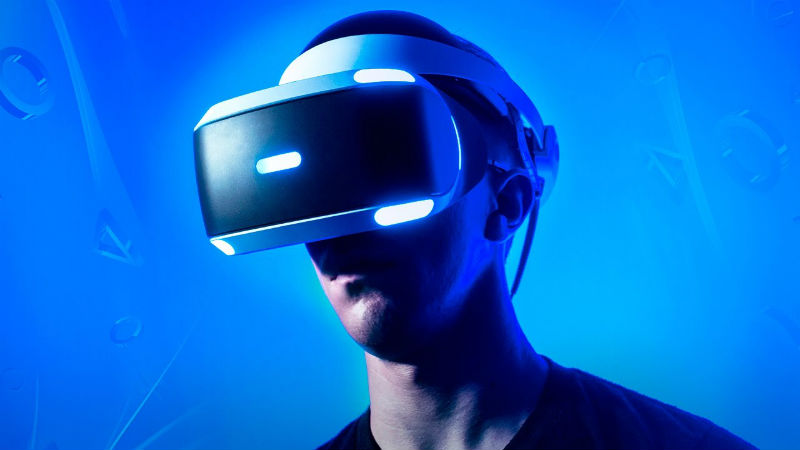Tech
Top 5 Gaming Technology Trends
What can you expect from the gaming and technology industry in 2023?

The traditional gaming industry has entered a new realm. Improving technology is only upping the immersive-factor, throwing you deeper into digital worlds, giving you more feedback and sensation than ever before, and even allowing you to dip into some online gambling for real money in South Africa. But that’s a story for another day.
Today’s gamers can experiment with 3D gaming experiences and interact with other gamers in real-time. But processing large amounts of gaming data requires cutting-edge gaming technology, powerful processing power, and fast internet.
Let’s look at the top 5 gaming technology trends driving the expansion of the new-gen gaming universe.
1. Augmented And Virtual Reality
By simulating an environment, virtual reality creates a truly captivating gaming experience, but of course, VR games require players to wear headsets to experience the virtual world, so there is a small hardware hurdle there.
VR has emerged as an innovative gaming technology that has piqued the interest of many individuals and businesses. By 2028, the virtual reality market is expected to exceed $250 billion.
Augmented reality is a subset of virtual reality in which a virtual environment is superimposed on the real world. The surroundings are used to create an environment using projections or digitised versions utilising the device’s display.
For example, picture a virtual robot standing in a corner of your room — it’s pictured on your screen using your device’s camera, but not in real life, obviously. Pokémon Go is an example of an AR game that creates an AR environment using a mobile phone camera, GPS, and gyroscope.
Like VR, AR is geared for exponential growth due to the growing popularity of smartphones.
2. Blockchain, Non-Financial Transactions (Nft), And Cryptocurrency
A blockchain is a network-wide chain of blocks that cannot be moved or altered. It’s completely transparent in that any wired network transaction is preserved — think of it like a database that stores decentralised transaction data.
Blockchain gaming technology got its name because of the way it works. When the block is finished, it’s connected to the previous block. This chain is extended as new information is placed in new blocks. It provides a secure transaction platform for NFTs and cryptocurrencies.
An NFT digital asset includes images, videos, memes, avatars, virtual land, accessories, and other items. Each NFT has a distinct digital footprint. When used on a blockchain platform, it has advantages like security, portability, immutability, and fairness.
Only one person can hold each NFT at a time. It can’t be substituted for another. The introduction of NFT has transformed the gaming world by providing monetary gains to players.
Then there’s cryptocurrency, a decentralised digital currency used for network trading. Cryptocurrency transactions are completely secure, and transaction data is recorded in the blockchain ledger using blockchain technology.
3. Cloud Computing Services
Since the start of video gaming in the 1970s, players have had to upgrade their console or computer every five years to play the latest and greatest releases. But this is no longer the case.
Almost all of the major players in the video game industry now offer their games through cloud-based subscription services. This includes Microsoft, Sony, Google, Nvidia, Tencent, and Amazon.
These services eliminate the need for gamers to continually buy expensive, power-hungry hardware and keep them in their homes. Today, you only need a smart TV and lightweight streaming devices like Chromecast or FireTV to enjoy the latest games.
Everything happens in the cloud data centre, and the output is delivered to homes through streaming video. Super-fast networks like 5G will bring us to the point where this new way of delivering games will be available to more people than ever.
4. Esports
Esports are competitive video games that include elements more commonly associated with professional sports. They often include live audiences, tournaments, leagues, sponsorships, and salaried players.
Esports exploded in popularity during the Covid-19 pandemic, generating over $1 billion in revenue for the first time in 2021. It’s expected to grow to nearly $2 billion in 2022.
This shows how much gaming has evolved into a spectator sport. We can expect both the number of professional players and the size of prize pools to grow.
5. The Metaverse
The metaverse is a 3D virtual world mainly concerned with social interactions and gaming. But it goes beyond that.
Large corporations are creating virtual worlds to provide an immersive online experience that allows you to socialise, work, play, shop, trade, and more. This concept of creating a virtual world grew to include virtual music concerts, which drew a large crowd.
Although this concept is in the initial stages of its development, the future looks bright. The metaverse will use futuristic technologies like VR/AR and AI to provide a single, shared virtual space.












